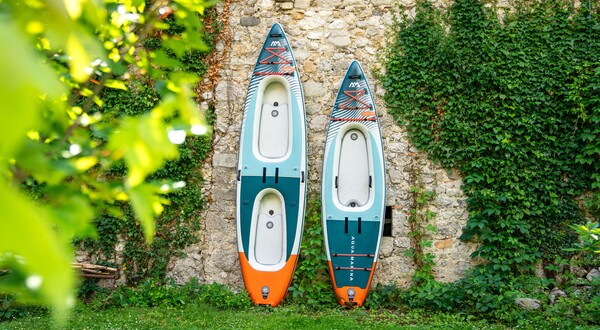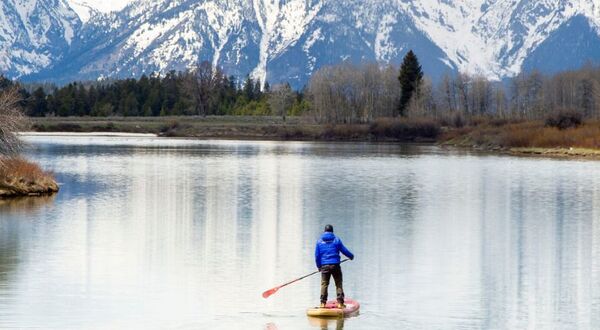- +(905) 761-8930
- 570 Applewood Crescent Unit 2 Concord, Ontario L4K 4B4 Concord ON CA L4K 0C8

Paddle boarding is a popular water sport that involves standing on a long board and propelling oneself forward with a paddle, providing a unique way to explore waterways and stay active.
Types of Paddle Boards
There are different types of paddle boards to suit various activities and skill levels, including all-around boards, touring boards, and racing boards, each offering distinct features and benefits.
Paddle Boarding Gear Overview
Essential gear for paddle boarding includes a paddle, a personal flotation device (PFD), a leash, appropriate clothing, and sunscreen to ensure safety and comfort while out on the water.
Choosing the Right Paddle Board
When selecting a paddle board, it is important to consider factors such as length, width, volume, stability, and weight capacity to find the right board that suits your body type and paddling style.
Water Safety Guidelines
Beginners should familiarize themselves with water safety guidelines such as wearing a PFD at all times, knowing weather conditions, avoiding strong currents or offshore winds, and practicing self-rescue techniques to ensure a safe paddle boarding experience.
Common Mistakes to Avoid
To avoid accidents and injuries, beginners should avoid common mistakes such as standing too far forward or back on the board, gripping the paddle incorrectly, not using proper technique when paddling, and underestimating the power of wind and currents.
Basic Paddling Techniques
Learning basic paddling techniques is crucial for beginners, including mastering the forward stroke, reverse stroke, sweep stroke for turning, bracing for stability, and feathering the blade to reduce wind resistance.
Tips for Maintaining Balance
Maintaining balance on a paddle board requires good posture, engaging core muscles for stability, keeping feet shoulder-width apart for better balance, looking ahead instead of down at the board, and adjusting body weight when needed.
Choosing the Right Waterbody
When selecting a waterbody for paddle boarding, beginners should consider factors such as calm and flat conditions, minimal boat traffic, accessibility, and any specific regulations or permits required for paddle boarding.
Popular Paddle Boarding Destinations
There are many popular paddle boarding destinations around the world, including coastal areas, lakes, rivers, and even urban waterways, offering beautiful scenery and various levels of difficulty to suit all skill levels.
Benefits of Paddle Boarding for Beginners
Paddle boarding offers numerous benefits for beginners, including a full-body workout, improved balance and core strength, a chance to connect with nature, stress relief, and a fun way to explore new places.
Next Steps to Improve Your Paddle Boarding Skills
To improve paddle boarding skills, beginners can focus on practicing different paddling techniques, building strength and endurance through regular paddling sessions, taking lessons or joining group activities for guidance and camaraderie, and exploring new locations to challenge themselves.
Paddle boarding is a popular water sport that involves standing on a long board and propelling oneself forward with a paddle, providing a unique way to explore waterways and stay active. It offers a full-body workout, improved balance and core strength, and a chance to connect with nature. Getting started with paddle boarding is an exciting adventure.
When it comes to paddle boarding, there are several types of paddle boards to choose from, each designed for different activities and water conditions. The most common types include all-around boards, touring boards, racing boards, and inflatable boards. All-around boards are versatile and great for beginners, while touring boards are designed for longer trips. Racing boards are built for speed, and inflatable boards offer convenience and portability. It's important to choose the right type of paddle board based on your skill level and intended use.
Before hitting the water, it's important to have the right gear. Essential paddle boarding gear includes a paddle, a personal flotation device (PFD), and appropriate clothing. A leash is also crucial for safety, as it keeps you connected to your board. Additionally, consider investing in a waterproof bag to protect your belongings and a whistle for emergencies.
When it comes to paddle boarding gear, there are a few essential items that every paddler should have. These include a paddle, a personal flotation device (PFD), appropriate clothing, a leash, a waterproof bag, and a whistle for emergencies. Having the right gear not only enhances your experience on the water but also ensures your safety.
Choosing the right paddle board is crucial for a successful paddle boarding experience. Consider factors such as the type of paddle boarding you'll be doing, your skill level, and the conditions you'll be paddling in. Determine whether you need an inflatable or solid board, and choose the appropriate size and shape based on your preferences and intended use. Additionally, consider the weight capacity and stability of the board to ensure a comfortable ride on the water.
When it comes to safety tips for beginner paddle boarders, it's essential to prioritize personal safety above all else. Start by wearing a properly fitted and Coast Guard-approved life jacket at all times on the water. Additionally, be aware of your surroundings and any potential hazards such as rocks, currents, or other watercraft. Practice proper paddling techniques to maintain balance and avoid falling off the board. Lastly, consider taking a beginner's safety course or paddling with a more experienced friend to learn about potential risks and how to handle them effectively.
When it comes to water safety guidelines for beginner paddle boarders, it's crucial to prioritize personal safety above all else. Wear a properly fitted and Coast Guard-approved life jacket at all times on the water. Be aware of your surroundings and potential hazards such as rocks, currents, or other watercraft. Practice proper paddling techniques to maintain balance and avoid falling off the board. Consider taking a beginner's safety course or paddling with a more experienced friend to learn about potential risks and how to handle them effectively.
Some common mistakes to avoid while paddle boarding include standing too far back on the board, leaning too far forward, not properly gripping the paddle, and forgetting to use proper foot positioning for balance. By avoiding these mistakes, beginner paddle boarders can have a safer and more enjoyable experience on the water.
To paddle board effectively, beginners should learn the proper paddling technique by using their core muscles, keeping a straight posture, and using a full range of motion with each stroke.
Beginners can improve their balance on the paddle board by keeping their feet parallel and hip-width apart, maintaining a relaxed stance, and shifting their weight from side to side to counterbalance any waves or movement in the water.
To master basic paddling techniques, beginners should focus on using their core muscles, maintaining proper posture, and utilizing a full range of motion with each stroke. By engaging the core and keeping a straight posture, paddle boarders can effectively propel themselves through the water. Using smooth and consistent strokes will improve efficiency and control on the board. With practice, these techniques will become second nature, enhancing the overall paddle boarding experience.
To maintain balance while paddle boarding, beginners should start by positioning their feet parallel to the board and shoulder-width apart. Keeping a slight bend in the knees and engaging the core muscles will provide stability. It's important to distribute weight evenly on both feet and keep the gaze forward to help maintain equilibrium. Gradually shifting weight from side to side can also help with balance and maneuvering the paddle board.
Whether you're a beginner or experienced paddle boarder, exploring different paddle boarding locations can add excitement and variety to your paddling adventures. When choosing a waterbody, consider factors such as calmness of the water, accessibility, and scenic beauty. Popular paddle boarding destinations include lakes, rivers, coastal areas, and even urban waterways. Researching and discovering new locations will not only enhance your skills but also allow you to appreciate the beauty of nature from a unique perspective.
When choosing the right waterbody for paddle boarding, consider factors such as calmness of the water, accessibility, and scenic beauty. Look for lakes, rivers, coastal areas, or urban waterways that suit your preferences and skill level. Researching different locations will enhance your skills and allow you to appreciate the beauty of nature from a unique perspective.
Popular Paddle Boarding Destinations include coastal areas like Hawaii, California, and Florida, which offer stunning scenery and opportunities for exploring marine life. Inland, places like Lake Tahoe and the Colorado River provide tranquil settings for paddle boarding. Researching these destinations will help beginners find the perfect spot to enhance their skills and enjoy the beauty of nature.
Benefits of Paddle Boarding for Beginners include improved balance, core strength, and cardiovascular fitness. To continue improving paddle boarding skills, beginners should focus on practicing basic techniques and gradually exploring more challenging locations. By taking these steps, beginners can enjoy the thrill of paddle boarding while staying safe and confident on the water.
Improved balance, core strength, and cardiovascular fitness are just a few of the benefits that beginners can experience through paddle boarding. By engaging in this water sport, newcomers can enhance their overall physical well-being while enjoying the tranquility of being on the water. It's a great way to stay active and have fun at the same time.
Once beginners have gained confidence in paddle boarding, they can take their skills to the next level by focusing on improving their technique. Some key next steps to enhance paddle boarding skills include practicing different paddling strokes, working on turns and maneuvers, and challenging oneself with longer and more adventurous paddleboarding sessions. By continually pushing boundaries and seeking improvement, beginners can progress from novice to experienced paddle boarders in no time.


